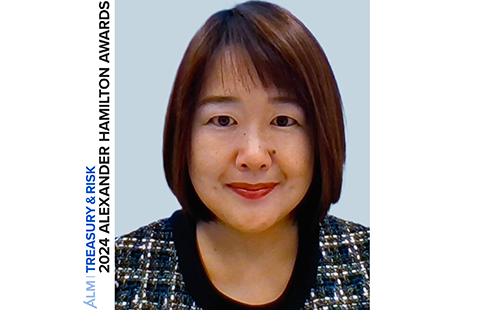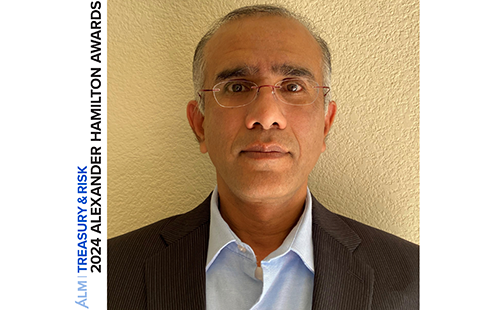
For London-based tech startup Clearsettle, liquidity isn't just important to support the business—it is the business. The company provides a technology platform that settles cross-border transactions for online merchants.
Alistair Cotton, treasury manager for Clearsettle, explains his company's service by describing a hypothetical U.K. footwear retailer: “Maybe their shoes suddenly become fashionable in Asia, and lots of Japanese customers start coming to shop on their website,” he says. “But if the merchant only has a U.K. card acquirer, Japanese customers' credit cards won't work. What Clearsettle does is connect to acquirers and other organizations that provide payment settlement. So for the merchant, instead of having to do integrations with a lot of different banks around the world, they do one integration with us and we allow them to globalize their acceptance of payments on their websites.”
Once a retailer has integrated with the Clearsettle platform, it can go to the solution's “payment wall” and select which payment types it will accept, from among more than 50 options. “We make it very easy for them to put cross-border payment options on their website and start accepting payments globally rather than having to integrate a lot of different technologies,” Cotton says. “They can focus on what they're doing well—selling shoes, in this example—and we provide the underlying plumbing for them get paid for their products worldwide.”
Every day, Clearsettle takes on the foreign exchange (FX) risk inherent in tens of thousands of cross-border transactions. “Suppose the Japanese customer wants to pay in yen, while the merchant expects payment in GBP [British pound],” Cotton explains. “The card acquirer in Japan will pull the yen from the customer's card and settle to us, and we'll flip it into pounds to pay the merchant. The FX risk comes in on the settlement terms and timing. To shield the merchant from currency risk, we will settle to them when the payment is made, but the acquirer might not settle to us till three days after the transaction. In those three days, the FX rate might move significantly one way or the other.”
As its transaction volume grew and currency risks ballooned, Clearsettle needed better visibility into the balances in its 30-plus banking systems. “We built this business quickly, which required us to open accounts with banks all over the world,” Cotton says. “But to get a view of our cash position in various currencies every day, someone had to get all the tokens, log into each bank's portal, download the statements, then upload the data into our accounting system. We needed a tool that could automatically pull all our banking data together and consolidate it in one place.”
In fact, Cotton and his team set out to automate as many portions of their liquidity management processes as possible. They wanted a flexible treasury workstation that could streamline connections to all their banks. They chose a treasury management system from TreasuryXpress, which they then customized to meet their needs.
Clearsettle worked with TreasuryXpress to connect the system to its different banks via technologies such as application programming interfaces (APIs), EBICS, and SWIFT messaging. “One thing we learned from this project,” says Cotton, “is that outside the United States, there is no standardization in bank connectivity, and many banks do not have experience automating their connections to customers. Efforts to integrate with bank portals is very, very varied.”
That said, the resulting system now pulls in data automatically from all of Clearsettle's banks, giving the company a consolidated view of cash holdings and currency risk around the world. The solution also houses information about all payments that pass through the Clearsettle platform, maintaining running totals of the company's outstanding risk in each currency. When its cash holding in a particular currency reaches a pre-set threshold, the system automatically initiates a trade that takes Clearsettle's FX risk for that currency back down to zero.
“Having cash visibility allows us to achieve internal netting of our cash balances in different currencies while FX transactions are going on in the background,” Cotton says. “That's basically money in our pocket straightaway.” As an example, Cotton describes a recent situation in which a British customer was using Clearsettle to fund purchase of a property denominated in Norwegian kroner.
 “Our gateway processes a lot of kroner,” he says. “Before we had this system, we would have bought Norwegian kroner to fund purchase of the property at the same time that we were selling kroner into euro to fund other payments. But because we had better visibility into our cash holdings, we saw that other, smaller transactions settling at the same time were equivalent to about 80 percent of the value of the property purchase. We were able to avoid spending the bid-ask spread on multiple FX transactions.” Cotton estimates that over the course of a year, such netting saves the company hundreds of thousands of pounds.
“Our gateway processes a lot of kroner,” he says. “Before we had this system, we would have bought Norwegian kroner to fund purchase of the property at the same time that we were selling kroner into euro to fund other payments. But because we had better visibility into our cash holdings, we saw that other, smaller transactions settling at the same time were equivalent to about 80 percent of the value of the property purchase. We were able to avoid spending the bid-ask spread on multiple FX transactions.” Cotton estimates that over the course of a year, such netting saves the company hundreds of thousands of pounds.
The system also automatically routes payments crossing the Clearsettle platform for the necessary authorizations, and it books all transactions and FX trades into Clearsettle's accounting system. “Our basic processes are very similar to what they were before,” Cotton says. “We get payments, flip them into a different currency, and pay the seller. But now 90-plus percent of the process is automated.”
By eliminating the vast majority of the manual work that its prior environment required, Clearsettle freed up management for more analysis. This has improved FX decisions and presented new opportunities. “For example, if we think the market for a particular currency is falling—say, dollars can buy more and more pounds—then we might change the thresholds for FX trades on those two currencies to try to profit from the rate change,” Cotton says. Overall, Clearsettle's FX margins have improved by around $200,000 a year.
© Touchpoint Markets, All Rights Reserved. Request academic re-use from www.copyright.com. All other uses, submit a request to [email protected]. For more inforrmation visit Asset & Logo Licensing.



